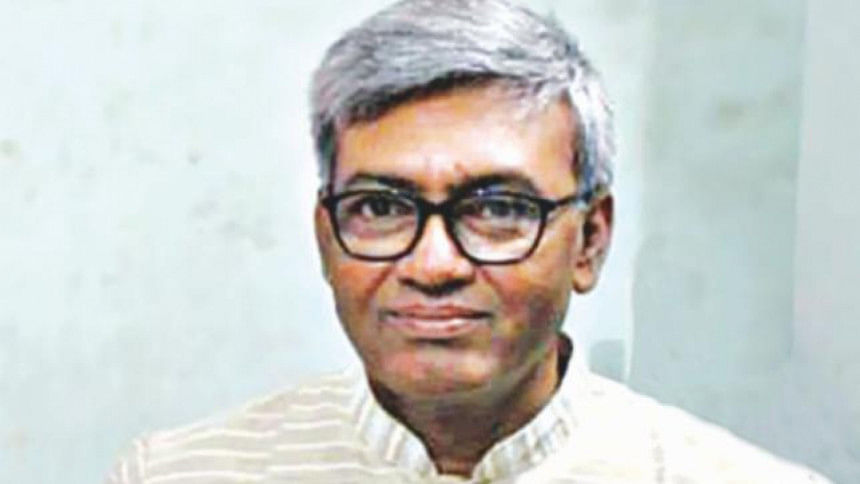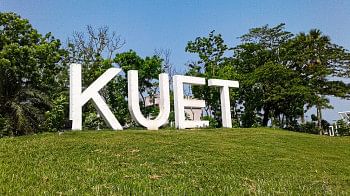The guerrillas of destiny

AKM Raisul Huq Bahar was a guerilla freedom fighter. During the Liberation War, he took part in many operations in the port city and adjacent areas, playing a pivotal role in the region's liberation.
But his most significant operation came at the Kaiballadham Railway Bridge operation, in Kattoli area, where a train carrying Pakistan army personnel and ammunition was blown off. What's more, the very rail bridge carrying them was destroyed.
At the start of the war, Bahar went to India to receive training on organising and conducting guerrilla war and war-planning. After coming back, he conducted his first operation in July 1971 -- an attack on a Pakistan army camp at a school adjacent to Bilonia border in Feni.
He went on to lead the guerrilla operation to destroy all the electric switchboards and transformers in Agrabad Commercial Area in the port city on August 5. Then on November 3, Bahar led an operation to destroy petrol pumps and transformers on the Chattogram-Dhaka Trunk Road, running from Dewan Hat Intersection to Kattoli.

Bahar breathed his last on September 18, 2018. Till 2015, he was a journalist and retired as the chief of The Daily Star's Chattogram bureau. This correspondent came to know about his operations from personal conversations during their time together at the newspaper.
This correspondent also got accounts of the operation from Dr Mahfuzur Rahman, a group leader of Karnaphuli Contingent-3 of Bangladesh Liberation Force. The story of the Kaiballadham Railway Bridge operation was also narrated in the article "Operation Kaiballadham Rail Setu", published on Sangramer Notebook.
Bahar also described the events in an interview with freedom fighter Nasiruddin Yousuff.
OPERATION KAIBALLADHAM
The Chattogram-Dhaka rail track is situated around 1,000 yards on the northern side of Colonel Hat at Kattoli. A series of hills and hillocks starting from Sitakunda along with hilly falls and canals surround the rail track. The bridge was situated over a canal in Kaiballadham area.
By the time of this operation, the Pakistan army in the port city was paranoid from the frequency of guerrilla attacks. Many of their soldiers were killed in the attacks, said Mahfuzur Rahman, a fifth-year student of Chattogram Medical College at that time.
Faced with the aggression, the Pakistan army was trying to get reinforcements from Feni, he added.
On a tip-off, the freedom fighters came to know about the train carrying the reinforcements. It was moving to and from Chattogram Railway Station, they discovered.
The train used to pass by Kaiballadham area in the evening. "To know it, I asked the freedom fighters in the area to look into it for more information," said Mahfuzur, a group leader of BLF Karnaphuli Contingent-3. "Bahar was tasked with training locally recruited freedom fighters of Kattoli. I trusted him to deliver."
Bahar took shelter at a house at North Kattoli, in the guise of a lodging teacher. "He organised Musa, Shafi, Shahid Uddin Badal, Imtiaz Uddin Pasha, Bela, and Tofazzal. They visited the spot to gather intelligence for around a week," said Mahfuzur, now chairman of Research Centre of Bangladesh Freedom Struggle and Liberation War, Chattogram.
"Bahar informed me that the train carrying Pakistan army and ammunition pass by the area in the evening. I asked him to get prepared for the operation," said Mahfuzur.
PLANNING FOR THE OPERATION
About the planning for the operation, this correspondent earlier got a chance to speak to Raisul Huq Bahar in details.
"We were looking for a suitable place from where we could come back safely after the operation," he said. "We selected the bridge for the operation because first of all, the area is silent and surrounded by bushes, and secondly, we could put explosives on the bridge to destroy it."
"If we could destroy the bridge as the train passed it, both the bridge and the train could be destroyed. If the bridge is destroyed, train movement on this route could be completely stopped."
"We, in the guise of locals, went to visit the spot every afternoon so that locals did not suspect anything. They thought we were going for afternoon walks," said Bahar, adding, "I decided to conduct operation on the weekly haat day as lot of people gathered in the area on that day. We could carry our explosives in shopping bags like locals going home after buying from the haat."
"Most importantly, we could mix up with the locals after completion of the operation," he said.
"We observed the train to see exactly when it passed by the bridge and decided to fit switch controlled explosives on the bridge to destroy it," he said.
"We also found out that the train engine was in the third compartment. The first two were dummies set up to deceive attackers, as anyone planning to ambush will naturally think the engine will be attached to the front," he added.
THE DAY OF THE OPERATION
"We went there wearing lungis, with shopping bags in hand. We went to the haat in the afternoon and bought some kitchen essentials so that no one would suspect us," reminisced Bahar. "We were carrying explosives and arms in the bags."
"We moved to the spot separately. Everyone was briefed on their duties and responsibilities, Bahar detailed. "I had told everyone to move separately after the operation and selected a place where we would meet afterwards."
"At first, four of us took position on both sides of the bridge, armed. The rest of us placed explosives, primers, safety fuse, pull switch, and switch button on the bridge," he continued.
"To execute and control the explosion, a long cord connected with the explosive was taken to nearby bushes. It was connected with a switch," he said. "Passing orders to the other members of the team to stay at a safe distance, I waited in the bush, around 100 yards off the bridge, with the switch button in hand."
"We could see the train coming in, its whistle blowing. We remained cautious. When the engine of the train was crossing the bridge, I switched on the button. Within in a few seconds... there was a loud bang!" said Bahar. "We got up and left the area as soon as possible."
Over a hundred members of the Pakistan army were either injured or killed, while the bridge was destroyed, Bahar said.
"As the bridge was destroyed, train movement on the route halted for a long time, cutting off the army from getting their reinforcements," added Dr Mahfuzur. "The operation also broke the spirit of the Pakistani army."
But more importantly, it raised the morale of the freedom fighters, he said.

 For all latest news, follow The Daily Star's Google News channel.
For all latest news, follow The Daily Star's Google News channel. 



Comments